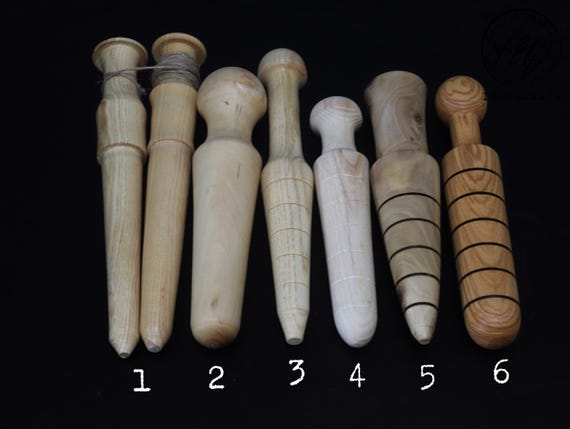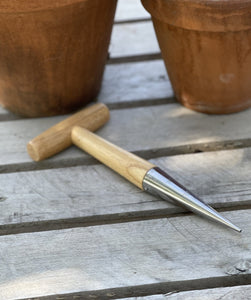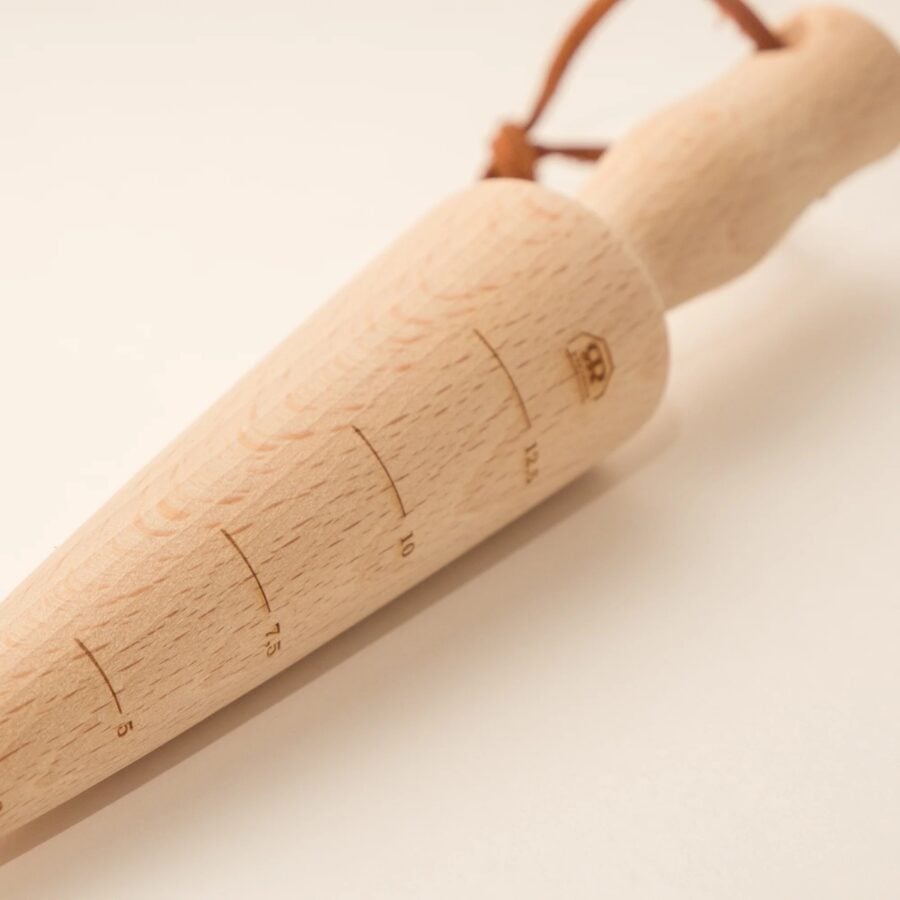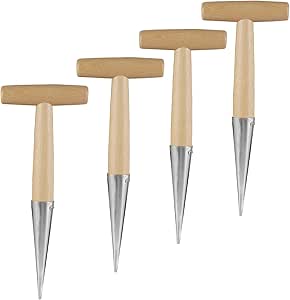Are you looking for a simple tool that can make planting seeds and bulbs easier and more precise? A garden dibber might be exactly what you need.
This handy tool helps you create perfect holes in the soil, saving you time and effort while giving your plants the best start. If you want to improve your gardening skills and see better results, keep reading to discover what a garden dibber is and how it can transform your planting routine.

Credit: www.etsy.com
Garden Dibber Basics
A garden dibber is a simple gardening tool. It helps make holes in soil for planting seeds or bulbs.
Using a dibber makes planting easier and more precise. It saves time and effort in the garden.
Purpose And Function
The main purpose of a garden dibber is to create small holes in the soil. These holes are for planting seeds, bulbs, or young plants.
The dibber helps gardeners plant at the right depth. It also keeps the planting spots neat and organized.
Types Of Dibbers
Garden dibbers come in different shapes and sizes. Each type fits different gardening needs.
- Pointed dibbers have a sharp tip for soft soil.
- Forked dibbers help loosen soil and make bigger holes.
- Adjustable dibbers allow setting the hole depth.
- Long dibbers are good for deep planting.
Materials Used
Dibbers are made from various materials. The choice depends on durability and comfort.
- Wood is light and easy to handle. It may wear out over time.
- Metal dibbers are strong and last longer. They can be heavier.
- Plastic dibbers are light and cheap. They may break easily.
- Some dibbers combine materials, like metal tips with wooden handles.

Credit: shop.thecelticfarm.com
Benefits Of Using A Dibber
A garden dibber is a simple tool used for planting seeds and seedlings. It helps gardeners make holes in the soil quickly and accurately. Using a dibber can improve your gardening process in many ways.
This tool is especially helpful for planting bulbs, seeds, and young plants. It saves effort and helps create better conditions for plants to grow.
Precision Planting
A dibber creates holes that are the right size and depth for each seed or seedling. This precision helps plants get the right amount of soil and space to grow well.
- Ensures uniform planting depth
- Prevents seeds from being too deep or too shallow
- Helps maintain even spacing between plants
Time Efficiency
Using a dibber speeds up the planting process. It allows gardeners to make holes quickly without bending or using extra tools.
| Task | With Dibber | Without Dibber |
| Making holes | Fast and easy | Slow and tiring |
| Planting seeds | Uniform and quick | Uneven and slow |
| Soil handling | Minimal disturbance | More disturbance |
Improved Seedling Growth
Proper planting depth and spacing help seedlings grow stronger and healthier. A dibber creates ideal conditions for roots to develop.
Benefits for seedlings include:
- Better root establishment
- Less risk of seed rot or drying out
- Improved nutrient and water uptake
How To Use A Garden Dibber
A garden dibber is a simple tool for making holes in the soil. It helps you plant seeds and bulbs easily. Using a dibber saves time and keeps your garden tidy.
Follow these steps to use your garden dibber correctly. This guide shows how to prepare the soil, mark spots, and plant seeds or bulbs.
Preparing The Soil
Before using the dibber, make sure the soil is soft and loose. Hard soil makes planting difficult. You can loosen the soil with a fork or hoe to help roots grow well.
Marking Planting Spots
Use the dibber to mark the exact spots where you want to plant. This helps you keep plants evenly spaced. Proper spacing avoids crowding and allows plants to get enough sunlight.
- Hold the dibber vertically over the soil.
- Press the pointed end into the soil to the needed depth.
- Lift the dibber to leave a hole.
- Repeat for all planting spots.
Planting Seeds And Bulbs
Once holes are made, place seeds or bulbs inside. The dibber helps you plant at the right depth. Cover the hole gently with soil after planting.
| Seed or Bulb | Planting Depth |
| Small Seeds | 0.5 to 1 inch |
| Large Seeds | 1 to 2 inches |
| Bulbs | 2 to 4 inches |
Choosing The Right Dibber
A garden dibber is a tool used to make holes in the soil for planting seeds or seedlings. Picking the right dibber helps you plant more easily and accurately.
Different dibbers come in various sizes, shapes, and materials. Knowing what to look for makes your gardening work better and faster.
Size And Shape Considerations
Choose a dibber size that fits the type of seeds or plants you use. Small dibbers work well for tiny seeds. Larger dibbers are better for seedlings or bigger seeds.
The shape of the dibber affects how deep and wide the hole will be. Pointed tips make narrow holes. Round or bulb-shaped tips make wider holes for bigger plants.
- Small dibbers for small seeds
- Larger dibbers for seedlings
- Pointed tips for narrow holes
- Round tips for wide holes
Material Durability
Dibbers come in wood, metal, or plastic. Wood feels natural and is easy to hold. Metal lasts a long time and can dig into hard soil. Plastic is light but may break easily.
Pick a material that matches how often you garden. For heavy use, metal is best. For light use, wood or plastic works well.
- Wood: natural and comfortable
- Metal: strong and long-lasting
- Plastic: light but less durable
Ergonomic Features
Ergonomic dibbers reduce hand strain. Look for handles that fit your hand size. Soft grips help if you plant for a long time.
Some dibbers have curved handles or special shapes. These designs make it easier to push the tool into the soil without hurting your hand.
- Comfortable handle size
- Soft or rubber grips
- Curved or shaped handles
Maintenance Tips
Taking care of your garden dibber helps it last longer. Proper maintenance keeps it working well for planting seeds or seedlings.
Simple care steps can prevent damage and make your gardening easier. These tips will help you keep your dibber in top shape.
Cleaning After Use
Clean your dibber after each use to remove soil and plant residue. This stops rust and keeps it hygienic.
Use a brush or cloth to scrub off dirt. For sticky soil, rinse with water and dry thoroughly.
Storage Advice
Store your dibber in a dry place to avoid rust and damage. Avoid leaving it outside in wet weather.
Keep it in a garden shed or a toolbox. Hanging it can prevent bending or dulling the tip.
- Choose a dry storage spot
- Hang or place on a rack
- Keep away from heavy tools
Sharpening And Repairs
Sharpen the tip of your dibber if it becomes dull. A sharp tip makes planting easier and more precise.
Use a metal file or sharpening stone for this task. Check for cracks or splits and fix them to avoid breaks.
- Sharpen with a fine file
- Check handle for cracks
- Use wood glue for small repairs

Credit: www.designlinesmagazine.com
Alternatives To Garden Dibbers
Garden dibbers are tools used for making holes in the soil for planting seeds. Sometimes, you might need an alternative tool that serves the same purpose.
There are various DIY tools and gardening implements that you can use instead of a garden dibber. Let’s explore some options.
Diy Tools For Planting
Creating your own planting tools can be simple and cost-effective. You can find many items around your home that can work just as well.
- Pencil: Use a pencil to poke small holes in soft soil.
- Chopstick: A chopstick is great for making uniform holes.
- Old Spoon: A spoon can dig and shape planting holes.
Other Gardening Implements
Besides DIY tools, several gardening implements can substitute a garden dibber. These tools might already be in your garden shed.
| Tool | Use |
| Trowel | Digging larger holes |
| Stick | Making small planting holes |
| Rake Handle | Creating rows for seeds |
Frequently Asked Questions
What Is The Primary Use Of A Garden Dibber?
A garden dibber is a tool used to make holes in soil. It helps plant seeds or seedlings evenly and quickly. It ensures proper depth for planting, promoting better growth. Gardeners use it for precision and efficiency in seed planting.
How Does A Garden Dibber Improve Planting Accuracy?
A garden dibber creates uniform holes at consistent depths. This ensures seeds or seedlings are planted evenly. Even planting helps plants grow uniformly and reduces waste. It makes gardening more organized and productive.
What Materials Are Garden Dibbers Typically Made From?
Garden dibbers are commonly made from wood, metal, or plastic. Wooden dibbers are traditional and lightweight. Metal dibbers are durable and strong. Plastic dibbers are affordable and lightweight, suitable for light gardening.
Can A Garden Dibber Be Used For All Plant Types?
Garden dibbers work well for most seeds and seedlings. They are ideal for small plants like vegetables and flowers. However, large plants or bulbs may need different tools. Always choose a dibber size suitable for the plant type.
Conclusion
A garden dibber helps make planting easier and neater. It creates holes in the soil quickly and with less effort. Gardeners save time and plant seeds or bulbs with care. Using a dibber keeps plants spaced well for better growth.
Anyone who loves gardening will find this tool useful. Try a garden dibber to enjoy simple and tidy planting. It is a small tool that makes a big difference.


